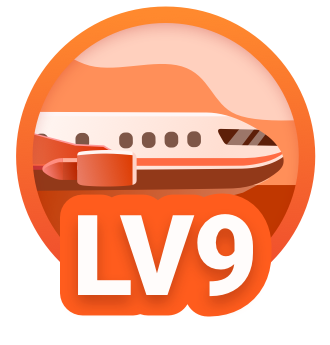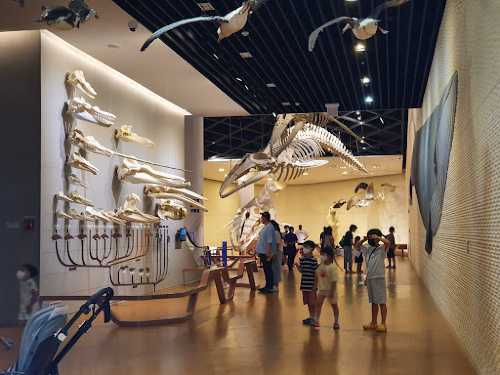App
Customer Support
NZD
Find Bookings
Popular Trip Moments
National Ecological Garden in Seochon County, South Chungcheong Province | This is the Hansan Mosi Hall in Seocheon-gun, Chungcheongnam-do, South Korea. | This is the Bird Ecology Exhibition Hall in Seocheon-gun, Chungcheongnam-do, South Korea. | This is the National Ecology Institute in Seocheon-gun, Chungcheongnam-do, South Korea. | This is the National Marine Biodiversity Institute in Seocheon-gun, Chungcheongnam-do, South Korea. | Seocheon National Ecological Park, where you can enjoy the specialness of nature with your children in Seocheon, South Chungcheong Province | Chungnam's Family-Friendly Destination: Seocheon National Institute of Ecology | Seocheon Special Market Raw Fish Restaurant Seokhosu | Bulgogi on a hot plate | Seocheon Restaurant | Places to visit in Seocheon | Seocheon Cafe | Seocheon octopus | <Low Coffee Bar>, a great place to heal while looking at the ocean view | Shinsung-ri reed field is the perfect place to go now | Janghang Songnim Shillim Bathhouse, a great place for a walk | Essential Travel Spot in Seocheon: Seocheon National Institute of Ecology | A place where you can enjoy the beautiful sea and forest scenery while taking a walk | A charming cafe with an attic overlooking the sea. | I went on a trip to Chunjang-daero | Walking along Chunjangdae Beach | Because I want to live a slow life | <Sunset Pension> where you can enjoy the sea and the forest path of Ophiopogon japonicus | <National Ecology Center>, a great place for an indoor date for just 5,000 won | A large cafe that's great to visit when traveling to Chungnam😎 | Janghang Skywalk | A Botanical Garden with the Best Desert Representation | Watching the sunset at Seocheon Maebawi Park | Seocheon Mallyangpo Port Park
Recommended Attractions at Popular Destinations
Bangkok attraction near me | Manila attraction near me | Tokyo attraction near me | Taipei attraction near me | Hong Kong attraction near me | Seoul attraction near me | Kuala Lumpur attraction near me | Los Angeles attraction near me | Shanghai attraction near me | New York attraction near me | Shenzhen attraction near me | Osaka attraction near me | Singapore attraction near me | London attraction near me | Guangzhou attraction near me | San Francisco attraction near me | Beijing attraction near me | Macau attraction near me | Bali attraction near me | Jakarta attraction near me | Paris attraction near me | Ho Chi Minh City attraction near me | Istanbul attraction near me | Phuket attraction near me | Chicago attraction near me | Seattle attraction near me | Toronto attraction near me | Orlando attraction near me | Cebu attraction near me | Chiang Mai attraction near me
Popular Attractions
Chengdu Research Base of Giant Panda Breeding | Jiudongtian Scenic Spot | Jayalath Cinema | Mount Fanjing | Dujiangyan Scenic Spot | Maotai Town | Hong Kong Disneyland | Tianmen Mountain National Forest Park | Shiqian Ancient Hot Springs | Wonderland Park | St. Ignatius Cathedral | Century Park | White Emperor City Qutang Gorge Scenic Spot | Shanghai Circus World | National Geo Park of Tengchong Volcanic And Geothermal | Eden Garden | Grand Tang Mall | Dianchi Cruise | Eland Cruise | Rozhľadňa na Tŕní | Masjid Miftahussa'adah | "Estación Alegre" Park | Parque Ecológico do Mondesir | Riley Park | Hundru Fall view point | Eagle Springs Golf Resort | Sree Krishna Swami Temple | WCA Meutiara Chateda - Masjid Azizi Raudhah Sipatuo | Fountain Hills Golf Course | Stone Forest Scenic Area
Popular Restaurants in Seocheon-gun
Hongwonhang Hoetjip | Hyangto Sikdang | Haegang Fwaet-jip | Samseong Sikdang | Sonmoa Hoegwan | Happiness Garden | In Front of Station Stone Pot Rice | Ain Chicken Hof | Halmaeonjeongjip | Belri House | Da Love Chicken | Folk Leaf Wraps and Rice | Hwe Miri Chicken | Sura Won | Seocheon Monkfish Soup | Gye Won House | Sundae Ox Head Rice Soup | Seaside Village Coffee Shop | Port Sashimi Restaurant | Handmade Gather | Sam Georae Sundae Rice Soup | Yogerpresso | Seocheon Hometown Mountain Cheon | Joeun Sashimi to Rang | Seoul King Dumplings | Castle Jageum | General Hof and Chicken | Bread Long Life Yagop | Sea Noodles Soup | The Jo Eun Chicken Pizza
Popular Ranked Lists
Top 10 Local Restaurants in Irkutsk | Popular Restaurants for Views & Experiences in Karachi | Top 16 Local Restaurants in Wenzhou | Popular Premium Hotels in Port Harcourt | Popular Luxury Hotels in Paradise Island | Popular Luxury Hotels Near Boljoon | Top 19 Local Restaurants in Kashgar | Top 10 Local Restaurants in Nagasaki | Popular Premium Hotels in Korcula | Popular Best Things to Do in Lvliang | Popular Luxury Hotels Near En Gev | Popular Premium Hotels in Torquay | Top 19 Local Restaurants in Shaoxing | Top 4 Best Things to Do in Pyongyang | Top 15 Local Restaurants in Tai'an | Popular Premium Hotels in Mayminsky District | Top 10 Local Restaurants in Minsk | Top 8 Best Things to Do in Dandong | Popular Luxury Hotels Near Palakkad | Popular Luxury Hotels Near Toap | Popular Premium Hotels Near Bintulu Division | Popular Best Things to Do in Ebian | Popular Luxury Hotels Near Bridgewater | Popular Luxury Hotels Near Akhaltsikhe | Popular Luxury Hotels in Brasilito | Popular Best Things to Do in Yanbian | Top 10 Local Restaurants in Goreme | Popular Premium Hotels in Mobile County | Top 4 Best Things to Do in Changzhi | Popular Premium Hotels in Maggona
Payment Methods
Our Partners
Copyright © 2025 Trip.com Travel Singapore Pte. Ltd. All rights reserved
Site Operator: Trip.com Travel Singapore Pte. Ltd.
Site Operator: Trip.com Travel Singapore Pte. Ltd.






















